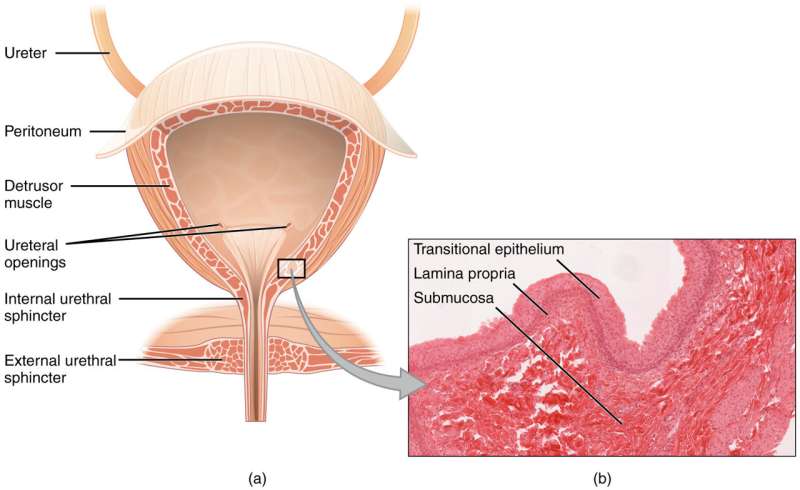Credit: OpenStax College, CC BY 3.0
More than 81,000 new cases of bladder cancer will be diagnosed in the U.S. in 2022, and more than 17,000 people will die of the disease, according to the American Cancer Society.
Bladder cancer occurs in men more frequently than in women, and the risk increases with age, especially after 55.
Bladder cancer signs and symptoms can include:
- Blood in the urine, which can cause urine to appear bright red or brown, though sometimes the urine appears normal and blood is detected on a lab test.
- Frequent urination.
- Painful urination.
- Back pain.
If you've been diagnosed with bladder cancer, your treatment will be based on the type, grade and stage of the cancer, as well as your overall health and preferences. Most bladder cancers are diagnosed at an early stage—when the cancer is highly treatable.
But even early stage bladder cancers can recur after successful treatment. For this reason, people with bladder cancer typically need follow-up tests for years after treatment to look for bladder cancer that recurs.
If you've been diagnosed with bladder cancer, treatment can include:
- Surgery to remove the cancer cells.
- Chemotherapy in the bladder—called intravesical chemotherapy—to treat cancers that are confined to the lining of the bladder but have a high risk of recurrence or progression to a higher stage.
- Chemotherapy for the whole body, called systemic chemotherapy, to increase the chance for a cure in a person having surgery to remove the bladder, or as a primary treatment when surgery isn't an option.
- Radiation therapy to destroy cancer cells, often as a primary treatment when surgery isn't an option or isn't desired.
- Immunotherapy to trigger the body's immune system to fight cancer cells, either in the bladder or throughout the body.
- Targeted therapy to treat advanced cancer when other treatments haven't helped.
2022 Mayo Clinic News Network.
Distributed by Tribune Content Agency, LLC.























